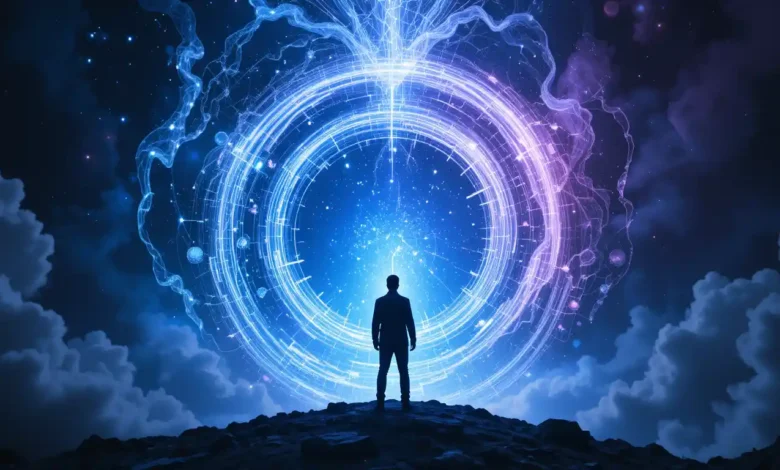
Introduction
In the vast landscape of storytelling, certain events become integral to the narrative’s core, often referred to as “canon events.” These pivotal moments shape the characters’ journeys and the plot’s trajectory, leaving an indelible mark on the story. The phrase “it was just a canon event” has gained traction, particularly in fan communities, signifying an event that is essential to the storyline’s continuity. This blog post delves deep into the concept of canon events, their significance in storytelling, and their impact on fans and creators alike.
What is a Canon Event?
Canon events are key moments within a story that are considered official and integral to the narrative. They are part of the established storyline, often defining the direction of the plot and the development of characters. Canon events are recognized by both creators and fans as essential components that cannot be altered or disregarded without fundamentally changing the story.
Characteristics of Canon Events
- Essential to Plot Development: Canon events drive the plot forward, introducing significant changes or revelations that shape the narrative.
- Character Development: These events often contribute to the growth or transformation of characters, providing them with new motivations or challenges.
- Unalterable: Unlike filler episodes or alternate storylines, canon events are fixed and non-negotiable parts of the story.
- Recognized by the Fandom: Fans acknowledge these events as critical, often discussing and analyzing their impact extensively.
The Importance of Canon Events in Storytelling
Canon events are crucial for maintaining the integrity and continuity of a story. They ensure that the narrative remains coherent and consistent, providing a solid foundation upon which the rest of the story can be built. By anchoring the plot, canon events prevent the story from becoming disjointed or losing its direction.
Creating Emotional Impact
Canon events often carry significant emotional weight, resonating deeply with the audience. They can evoke a wide range of emotions, from joy and excitement to sorrow and anger. This emotional connection keeps the audience invested in the story, fostering a deeper engagement with the characters and their journeys.
Enhancing the Narrative
These events enhance the narrative by introducing critical plot points and turning points that add complexity and depth to the story. They can reveal hidden truths, resolve long-standing conflicts, or set the stage for future developments. By weaving canon events into the narrative, storytellers can create a richer and more immersive experience for their audience.
Examples of Canon Events in Popular Media
Canon events are prevalent across various forms of media, from literature and film to television and video games. Here are a few notable examples:
Harry Potter Series
In J.K. Rowling’s “Harry Potter” series, the death of Harry’s parents, James and Lily Potter, is a pivotal canon event. This tragic moment sets the stage for Harry’s entire journey, shaping his character and driving the plot of the series.
Star Wars Saga
The revelation that Darth Vader is Luke Skywalker’s father in “Star Wars: The Empire Strikes Back” is one of the most iconic canon events in cinematic history. This moment fundamentally changes the dynamics between the characters and propels the story in a new direction.
Marvel Cinematic Universe (MCU)
In the MCU, the Snap by Thanos in “Avengers: Infinity War” is a monumental canon event. This moment of devastation has far-reaching consequences, affecting numerous characters and setting the stage for the events of “Avengers: Endgame.”
The Role of Canon Events in Fandom Culture
Canon events play a significant role in fandom culture, shaping discussions, theories, and fan creations. Fans often analyze these events in great detail, exploring their implications and speculating about future developments.
Fan Theories and Speculation
Canon events often give rise to fan theories and speculation. Fans dissect every detail, looking for clues and foreshadowing that might hint at future canon events. This active engagement fosters a sense of community and shared excitement among fans.
Fan Fiction and Alternate Universes
While canon events are fixed within the official narrative, fans often explore alternate versions of these events through fan fiction. These creative works allow fans to reimagine the story, exploring “what if” scenarios that diverge from the established canon.
The Challenges of Creating Canon Events
Creating canon events is a delicate task for storytellers. These moments must be carefully crafted to ensure they align with the overall narrative and character arcs. Here are some challenges faced by creators:
Balancing Consistency and Innovation
Storytellers must strike a balance between maintaining consistency with the established narrative and introducing new, innovative elements. Canon events should feel natural and organic, fitting seamlessly into the story while still surprising and engaging the audience.
Managing Fan Expectations
Fans often have strong opinions and expectations regarding canon events. Managing these expectations while staying true to the creative vision can be challenging. Creators must navigate the fine line between satisfying the audience and preserving the integrity of the story.
Avoiding Plot Holes and Inconsistencies
Canon events must be meticulously planned to avoid plot holes and inconsistencies. Any discrepancies can undermine the story’s credibility and disrupt the audience’s suspension of disbelief. Attention to detail is crucial in ensuring that these events enhance, rather than detract from, the narrative.
The Impact of Canon Events on Character Arcs
Canon events have a profound impact on character arcs, driving their development and shaping their motivations. These events often serve as turning points that redefine a character’s journey.
Transformational Moments
Canon events can be transformational moments for characters, prompting significant changes in their beliefs, goals, or behavior. For example, the death of a loved one might push a character to seek revenge or justice, altering their path and priorities.
Challenges and Growth
These events often present characters with challenges that test their resilience and adaptability. Overcoming these challenges leads to growth and development, allowing characters to evolve in meaningful ways. This growth keeps the narrative dynamic and engaging, as characters are constantly evolving in response to the events they experience.
Defining Relationships
Canon events can also define or redefine relationships between characters. A shared traumatic experience or a moment of triumph can strengthen bonds, create alliances, or spark rivalries. These relationships add depth to the story, making the interactions between characters more compelling and realistic.
The Evolution of Canon Events in Long-Running Series
In long-running series, canon events can evolve and accumulate, creating a rich tapestry of interconnected moments that shape the narrative over time. This evolution adds layers of complexity and depth to the story, as past events continue to influence the present and future.
Building a Cohesive Storyline
By weaving canon events into the fabric of the story, creators can build a cohesive and interconnected narrative. Each event builds upon the previous ones, creating a sense of continuity and progression that keeps the audience invested.
Revisiting and Reinterpreting Past Events
Long-running series often revisit and reinterpret past canon events, providing new insights and perspectives. This reinterpretation can add new dimensions to the story, revealing hidden layers and connections that enrich the narrative.
Expanding the Universe
Canon events can also serve as a foundation for expanding the story’s universe. Spin-offs, prequels, and sequels can explore different aspects of these events, providing a broader and more nuanced understanding of the narrative.
Canon Events in Interactive Media
In interactive media, such as video games and interactive fiction, canon events play a unique role. Players’ choices and actions can influence the occurrence and outcome of these events, adding an interactive and immersive element to the storytelling experience.
Branching Narratives
Interactive media often feature branching narratives, where different choices lead to different canon events. This branching structure allows players to experience multiple versions of the story, each with its own set of canon events.
Player Agency and Impact
Player agency is a key aspect of interactive media, giving players the power to shape the narrative through their actions. Canon events in these media reflect the player’s choices, making them feel more invested and connected to the story.
Replayability
The inclusion of multiple canon events and branching paths enhances replayability, as players can explore different choices and outcomes. This replayability adds longevity to the story, encouraging players to revisit and re-engage with the narrative.
The Future of Canon Events in Storytelling
As storytelling continues to evolve, the concept of canon events will likely remain a fundamental aspect of narrative construction. Emerging technologies and new storytelling mediums will provide creators with innovative ways to craft and present these pivotal moments.
Virtual and Augmented Reality
Virtual and augmented reality offer new possibilities for immersive storytelling, allowing audiences to experience canon events in a more interactive and engaging manner. These technologies can create a deeper sense of presence and emotional connection, making canon events even more impactful.
Transmedia Storytelling
Transmedia storytelling involves telling a single story across multiple platforms and formats, each contributing to the overall narrative. Canon events in transmedia stories can span different media, creating a cohesive and interconnected experience that engages audiences across various forms of content.
Interactive and Adaptive Narratives
Advancements in artificial intelligence and machine learning can enable the creation of adaptive narratives that respond to audience input. In these dynamic stories, canon events can be tailored to individual preferences, creating a personalized and unique storytelling experience.
Conclusion
Canon events are the backbone of compelling storytelling, providing the critical moments that define narratives and shape character arcs. These events resonate deeply with audiences, creating emotional connections that keep them invested in the story. As storytelling continues to evolve, canon events will remain a vital element, ensuring that narratives remain cohesive, engaging, and impactful.
FAQs
1. What is a canon event in storytelling?
A canon event is a pivotal moment within a story that is essential to the narrative’s continuity and character development. It is an official part of the storyline recognized by both creators and fans.
2. How do canon events differ from non-canon events?
Canon events are integral to the main narrative and are unalterable, while non-canon events, such as filler episodes or alternate storylines, do not impact the official storyline.
3. Why are canon events important in long-running series?
In long-running series, canon events build a cohesive and interconnected narrative, adding layers of complexity and continuity that keep the audience engaged over time.
4. Can canon events change in interactive media?
In interactive media, canon events can vary based on player choices, creating different outcomes and paths within the narrative. This adds an element of player agency and replayability.
5. How do canon events impact character development?
Canon events often serve as turning points that drive character growth and transformation. They present challenges, reveal new truths, and redefine relationships, contributing to the dynamic evolution of characters.





